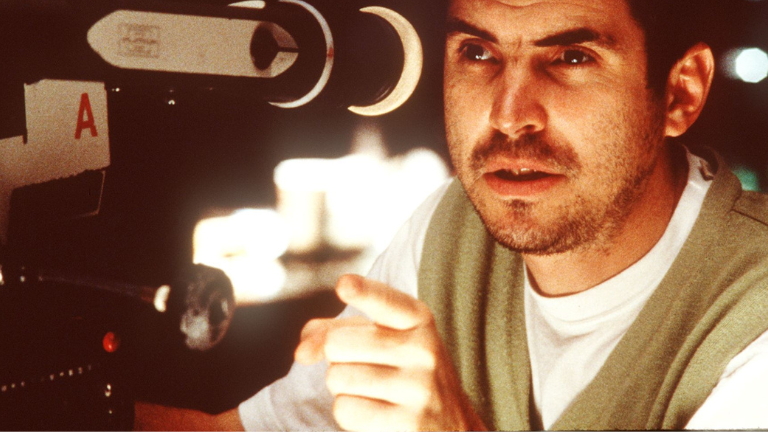
Take Her Away, Ern!… The Collective Works of Alfonso Cuarón
Written by on Feb 07, 2025 12:00 PM
“There is no time for caution; there is only time for transformation.” – Alfonso Cuarón
Cinema – and the filmmakers that help shape it – has the power to change the landscape of contemporary culture. It sways audiences in different directions, exploring hard truths to provoke thought and inspire change. Legendary Mexican director Alfonso Cuarón is no stranger to this, examining themes of friendship, sexuality, and the disparities between social classes in his films.
Cuarón leaps from genre to genre using his cinematic language to create some of the most visually arresting and emotionally compelling films. From his standout coming-of-age film exploring the complicated feelings of love and heartbreak, using only handheld cameras to create a documentary feel, to a universal story about human experience, Cuarón always focuses on thematically driven concepts. Often injecting sensibility and creating unexpected moments that feel intimate to viewers. This mastery of his craft has earned him multiple Oscars® and critical acclaim worldwide.
With Harry Potter and the Prisoner of Azkaban bolting its way into theatres nationwide as part of our Fathom Fan Favorite series, we hopped on the Knight Bus to explore the collective works of Alfonso Cuarón.
Early Career
Cuarón was born on November 28, 1961, in Mexico City to Alfredo Cuarón and Cristina Orozco. He wanted to make films from an early age, often lugging around a super-8 camera and watching John Ford and Vittorio De Sica movies at the local cinema. Cuarón often enlisted the help of his four siblings to create movies, with one of his brothers and longtime screenwriter, Carlos Cuarón, stating that “He was a huge pain in the ass, shooting everything. My sister and I became his prop, his stunt, whatever. It was unbearable. He would repeat that he was going to be a film director again and again” [1].
This passion for cinema brought him to the Centro Universitario De Estudios Cinematográficos to study film alongside future collaborator and cinematographer, Emmanuel Lubezki. The duo formed a close bond and were eventually expelled from the school for making a short film in English. These actions were deemed rebellious by instructors, who echoed the sentiments of a 70-year-old government known as the Partido Revolucionario Institucional or PRI. Cuarón considered the idea of Mexican cinema exclusively filmed in Spanish old fashioned.
Instead of appealing the expulsion and working in the PRI’s Mexican film industry – which was tailored towards government propaganda and commercials – Cuarón created a cinema club at the National Museum of Art (MUNAL) and served as an assistant director for several Mexican American productions, such as Nocaut (1984), Gaby: A True Story (1987) and Romero (1989). This time in his life proved invaluable, and Cuarón was able to get hands-on experience before turning his sights to his first feature film, Sólo con tu Pareja (1991). Co-written with his brother Carlos and shot by Lubezki, the film is a dark comedy satire about a womanizer who gets a taste of his own medicine after being tricked into believing he has AIDS.
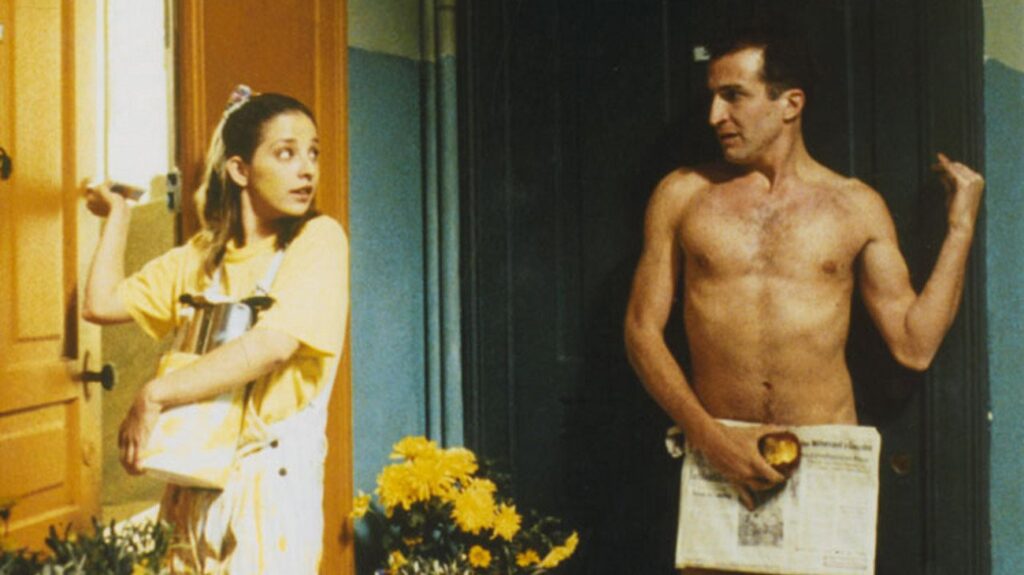
Sólo con tu Pareja earned a spot at the 1991 Toronto Film Festival, catching the eye of Sydney Pollock, who fell in love with the new director’s unapologetic style. Pollock lobbied for Cuarón to direct an episode of Showtime’s neo-noir series, Fallen Angels. With the likes of Tom Hanks, Tom Cruise, and Steven Soderbergh attached to the project, Cuarón felt out of his league and the production of his episode got off to a disastrous start. It wasn’t until he received a pep talk from star Alan Rickman, that he was not only able to finish production, but earn a CableACE Award for his 1993 episode, “Murder, Obliquely.”
While still a relatively unknown director, Cuarón received a script on his desk for an adaptation of Frances Hodgson Burnett’s 1905 novel. Falling in love with it, he convinced producer Mark Johnson that he was the right director for A Little Princess (1995). Starring child actors, and exploring a narratively ambitious story, Cuarón was able to showcase his ability to work with younger talent to create a compelling story.
Nuevo Cine Mexicano and Hollywood
Following A Little Princess, Cuarón was given the opportunity to take on his biggest film to date, an adaptation of Charles Dickens’ Great Expectations. With stars such as Ethan Hawke, Gwyneth Paltrow, and Robert De Niro attached to the project, it was set to be his introduction to Hollywood. However, Great Expectations (1998) fell short of commercial success, struggling at the box office and earning mixed reviews. The film became a black mark on both Cuarón and Lubezki’s resumes, shunning them out of the spotlight temporarily. Cuarón would later admit that the film was a “completely failed idea” and that his “first instinct was to say no to that film…. [allowing] himself to be dragged in for the wrong reasons” [2].
This lead Cuarón and Lubezki back to Mexico, where a new wave was beginning to take shape, known as Nuevo Cine Mexicano or New Mexican Cinema. After the PRI lost control of the Mexican government, neoliberal policies with a focus on the arts were injected into the stagnant country’s film industry. Mexican filmmakers were encouraged to create independent cinema, and the government helped fund most of these projects. This melting pot allowed Cuarón to create what became his standout film: Y tu Mamá También (2001).
Y tu Mamá También is a sexy and insightful coming-of-age story that encapsulates the essence of New Mexican Cinema. Starring Gael García Bernal and Diego Luna as teenagers who set out on a road trip with an older woman, played by Maribel Verdú , across the Mexican countryside. The film weaves in themes of love, friendship, and heartbreak as the teenagers discover who they are. Y tu Mamá También brought Cuarón his first Oscar® nomination for Best Original Screenplay and earned him another shot at big-budget Hollywood films.
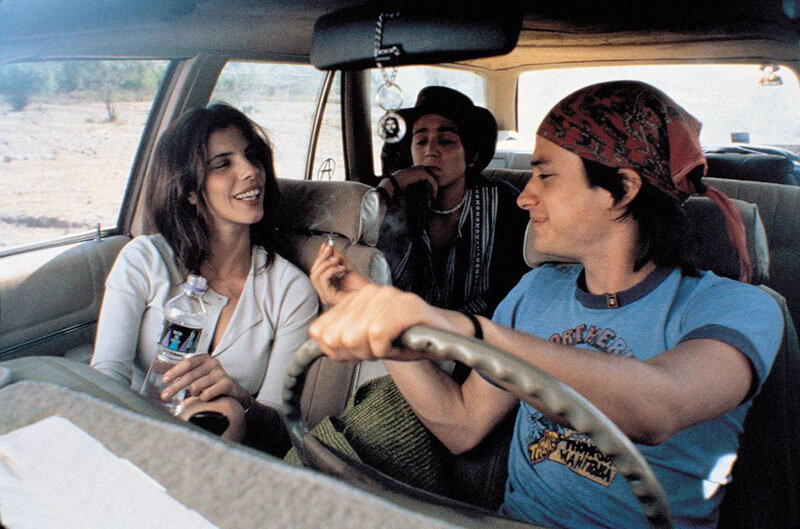
Heeding the advice of his friend Guillermo del Toro, who encouraged him to step back into the spotlight, Cuarón directed Harry Potter and the Prisoner of Azkaban (2004), the third film in the franchise. Following the immense popularity of the first two installments, and still being a relatively unknown director, Cuarón was determined to make his mark on the Potter-verse by injecting a slightly darker feel that matched the book. This, in addition to dressing the actors in “jeans and hoodies to ground the story and make them look the way kids look,” was a stark contrast to the lighthearted family films that former director Chris Columbus had established [3].
Cuarón’s gamble paid off and the film was released to a series of commercial and critical successes, arguably allowing the rest of the Harry Potter series to explore darker themes as the characters grew into their teenage years. Harry Potter and the Prisoner of Azkaban is considered the best film in the series, with star Daniel Radcliffe recalling in a 2022 interview with Empire how the director transformed the franchise, stating: “Now, by the standards of modern cinema, that decision just looks very smart and good. At the time, I think we can forget how absolutely left field that choice seemed, as the guy who’d just done Y Tu Mamá También.” Elaborating on the situation and how it transformed the film, he added, “But again, it’s one of the decisions that our producer David Heyman made that really shaped the next few years of the series and allowed us to go to a darker place” [4].
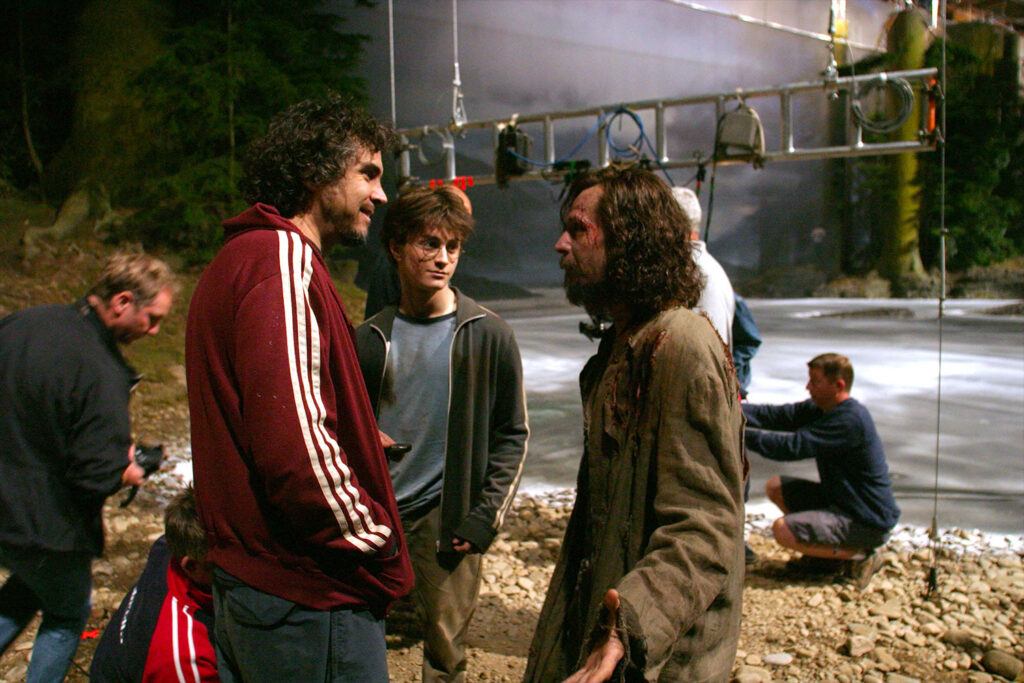
The success of Harry Potter and the Prisoner of Azkaban gave the director the creative freedom to make a film he had been thinking about since the 9/11 terrorist attacks, Children of Men (2006). Adapting the science-fiction novel from P.D. James, the film does not showcase the future as characters wearing strange costumes or visiting the moon, but is rather grounded in a rundown, shabby version of our reality where humans are, infertile, and a refugee crisis offers glimpses of the dystopian future he wanted to explore. Viewers are treated to Cuarón’s trademark tracking sequences, stunning visuals, and haunting performances that earned Children of Men three Oscar® nominations.
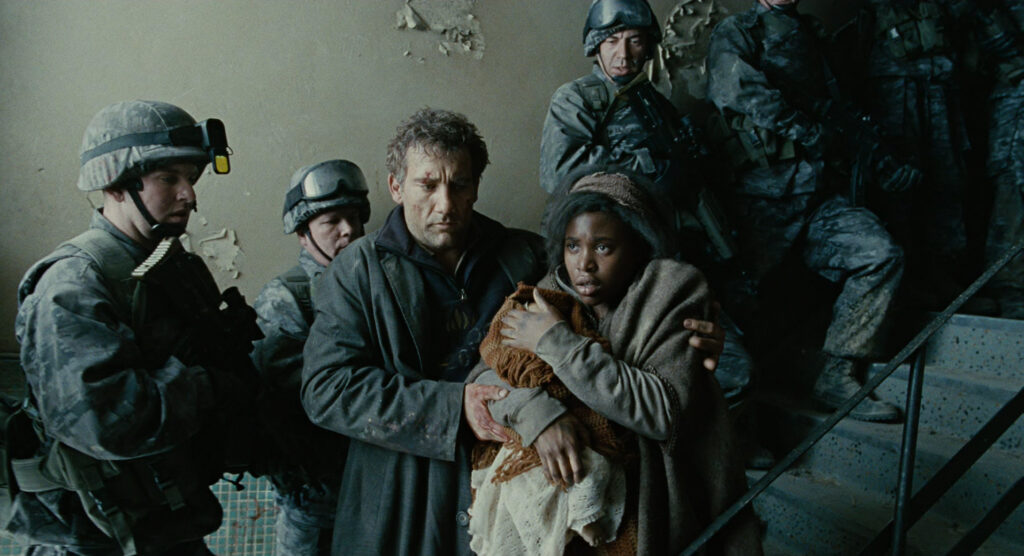
Now fully established as a top director in Hollywood, Cuarón and his older son, Jonas, set out to make his most ambitious project to date, Gravity (2013), a film about an astronaut drifting in space. Using robot cameras, more than 1.8 million individually controllable LEDs, and creating a nine-foot cube to simulate a microgravity environment, Cuarón masterfully captured the eerily beautiful images of actor George Clooney and Sandra Bullock braving the dangers of space. Gravity was his love letter to Stanley Kubrick’s 2001: A Space Odyssey (1968) and earned Cuarón an Oscar® for best director, becoming the first Latino to win the award.
With the daunting obstacles of Gravity out of the way, Cuarón wanted to return to Mexican cinema, focusing on an autobiographical picture, Roma (2018). Written and shot by the director, the film recreated the private and public moments of his childhood, forming a neorealistic story about an indigenous woman who works as a maid for a middle-class white family that’s slowly falling apart. Shot in black and white and using unknown actors, Cuarón masterfully created a universal story about human experience, earning him Oscars® for Best Director, Cinematographer, Foreign Language Film, as well as a nomination for Best Picture.

Roma remains one of the greatest contemporary films of all time and firmly cemented Cuarón as one of the greatest of our generation.
Overall, it’s hard to imagine what the landscape of contemporary cinema would look like without Alfonso Cuarón. His artistically-driven films have captured the imaginations of viewers and transformed filmmaking as we know it. Sign up for our newsletter to keep up to date with all Fathom Entertainment’s screenings.



"*" indicates required fields